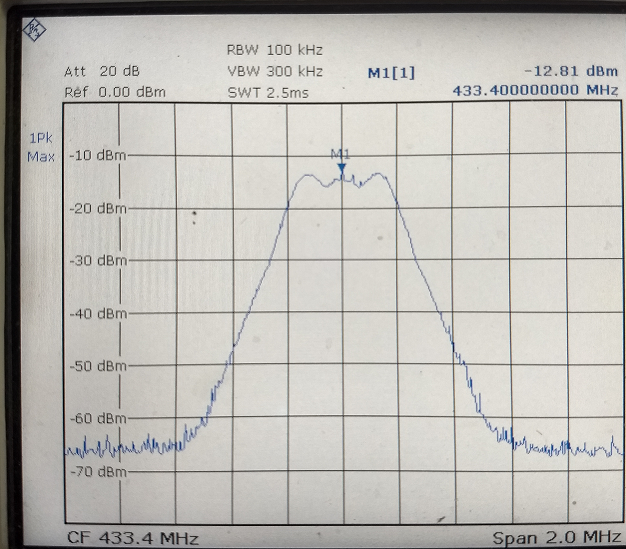I was trying to measure received signal level of a pulsed signal (at 433MHz) sending packages of 64 bytes with an interval of 1s. As shown in the attachment, the settings of Spectrum Analyzer are RBW=100 kHz, VBW=300kHz, sweep time=2.5 ms and span=2.0 MHz.
The first problem is the conflict between signal integrity and sweep speed: When the attenuation got more and more significant (the TX is moving inside a lossy medium), the received signal amplitude got reduced a lot which made it more difficult to detect. That's why I had to broaden the received signal by reducing span and RBW. The result is the received signal seemed to be much "slower" than the transmitted one (which transmitted a package per second). The interval of spikes on SA of the received signal is much longer than 1s. I can't tell if those pulses failed to arrive or I missed them due to I swept too slow.
Derived from the first problem, the second problem is with multiple readings/samplings at fixed intervals: As I was measuring in a complicated environment, I should take multiple samples of SA reading at each location. And I think I should take the readings with a fixed interval (such as I read SA every 2 seconds or so). However, as the received signal was very "slow" in SA display and didn't follow any periodic norma, I would read many noise floor levelled signals if I read at a fixed interval.
Is any rule of thumb to set the sweep time and RBW so that the above problems could be eliminated?


